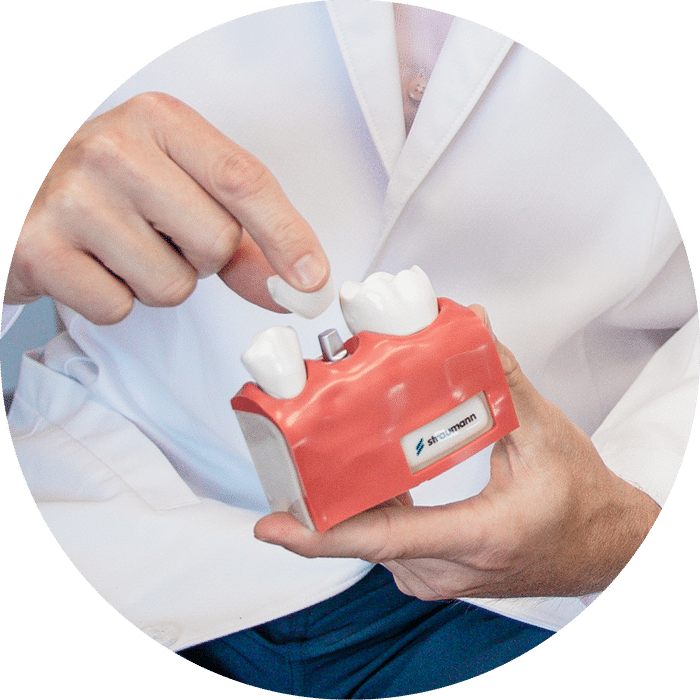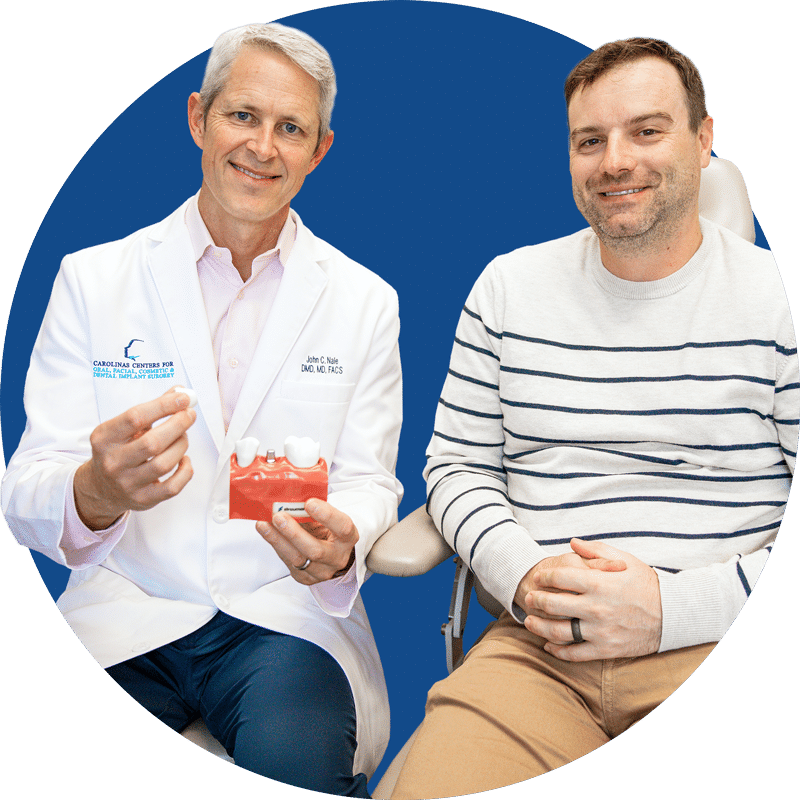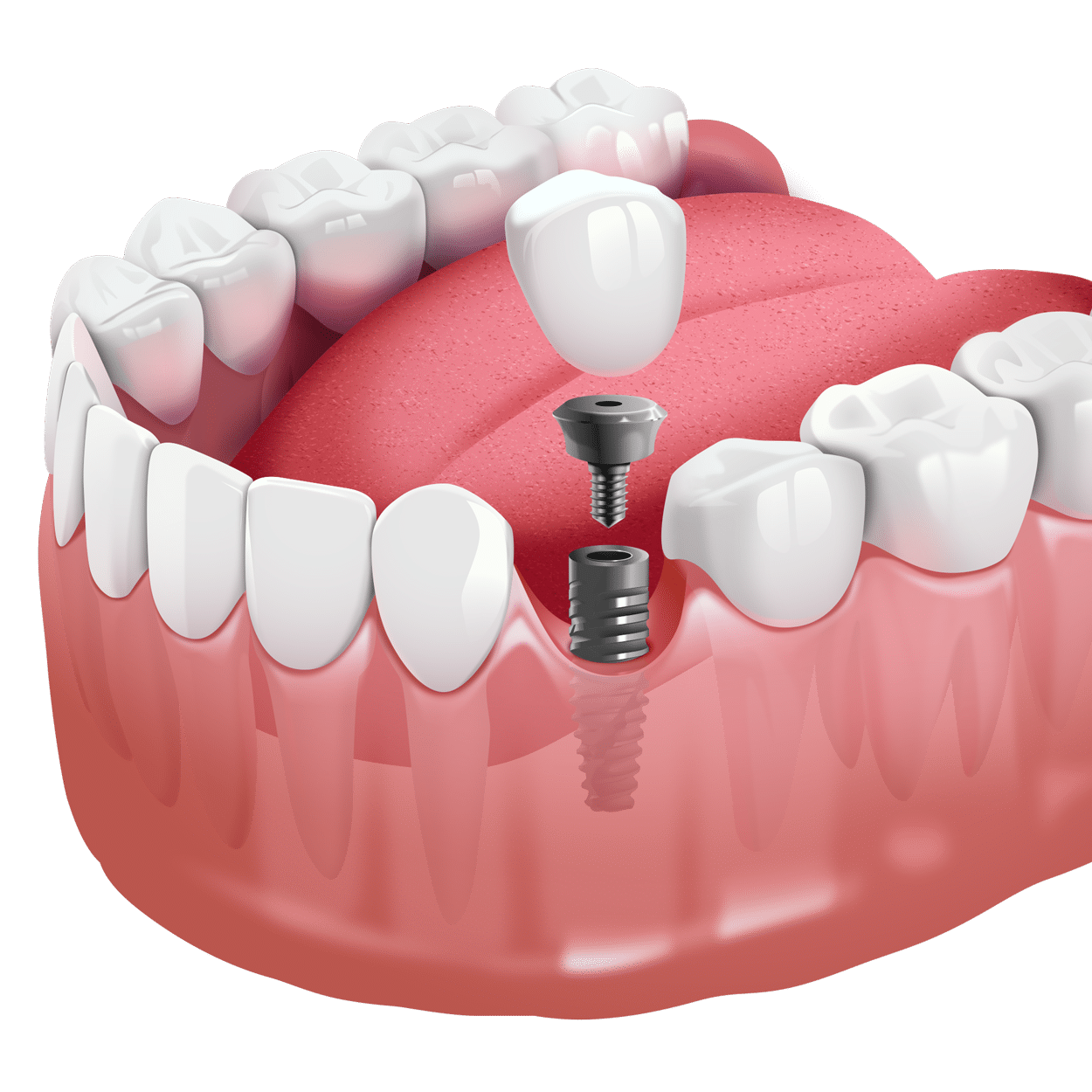Single Dental Implants
Even one missing tooth can affect your smile’s strength, alignment, and appearance over time. Dental implants are a simple fix for missing teeth with a big impact.
Our board-certified oral surgeons specialize in the surgical placement of dental implants to provide a solid foundation for a full, confident, and healthy smile.

The Healthiest Solution for Missing Teeth
When it comes to tooth replacement, dental implants are the preferred solution for good reason.
Unlike bridges or partials, implants preserve your jawbone health and facial structure, don’t rely on adjacent teeth for support, and mimic your real tooth in both appearance and function.
Precision placement of your dental implant by a specialized oral and maxillofacial surgeon is the critical foundation for a strong, lasting implant.
At Carolinas Center for Oral & Facial Surgery, we partner with you and your dentist on the dental implant process to deliver a healthy, natural-looking, and fully functional solution that can last a lifetime.

Why You Shouldn’t Ignore a Missing Tooth
Ignoring a missing tooth can lead to bigger problems with your health and well-being over time.
Shifting Teeth & Bite Issues
Neighboring teeth can drift into the gap left by a missing tooth, causing misalignment, bite issues, and potential damage to the roots and health of your other teeth.
Bone Loss
Without the stimulation of a tooth root in your jawbone, the bone tissue breaks down and can alter your facial structure, jawline, and appearance.
Functional Problems
A missing tooth can change how you speak and cause difficulty biting and chewing the foods you enjoy and need for a healthy diet.
Aesthetic Concerns
You may feel self-conscious or even unhappy about the way your smile looks when you are missing a tooth.
Why a Dental Implant is the Smart Choice
Replacing the tooth with an implant helps maintain your natural alignment, keeps your jawbone healthy, and restores full function and aesthetics.
A single dental implant replaces the entire tooth structure—from root to crown. It consists of three parts:
Titanium Implant Post
Placed by your oral surgeon, the implant post fuses with your jawbone for fixed, lasting stability.
Dental Implant Abutment
Connects the implant (replacement root) to the crown or visible part of the implant in your mouth.
Custom Crown
Crafted by your dentist or restorative specialist, the visible crown finalizes the bite, appearance, and feel of your new tooth.

A Collaborative Approach
Our oral and maxillofacial surgeons partner closely with your restorative dentist or prosthodontist to deliver the best possible dental implant results.
This close coordination ensures precisely placed implants and outstanding tooth aesthetics, creating a seamless, natural-looking restoration.
- Oral Surgeon
Surgically places the titanium implant in its precise location using advanced imaging and surgical guides, and handles any necessary bone grafting or sinus lifts. - General Dentist
After implant integration and healing, designs and attaches a custom tooth crown tailored to your bite, natural tooth shape, and shade. - Shared Goal
Provide you with a beautiful, stable replacement tooth that looks, feels, and functions like your natural teeth long term.

Why Choose an Oral Surgeon
Only oral and maxillofacial surgeons have the unique combination of surgical training, anatomical expertise, and anesthesia experience for top-tier surgical placement of your dental implants.
- Advanced Training
Specialized expertise on the intricate anatomy and surgical complexities of the jaw, gums, and nerves, ensuring each implant is positioned to support a crown that blends seamlessly with your smile. - Bone Grafting & Sinus Lift Mastery
Essential when additional bone is needed to rebuild the jawbone and properly support the implant. - Anesthesia & Sedation Options
From local numbing to IV sedation, oral surgeons are specially trained to administer all levels of anesthesia for your comfort and safety. - Precision Skills
As dental implant specialists, our surgeons place implants daily, using the latest 3D-guided tools and imaging to minimize complications and improve success rates.

The Single-Tooth Dental Implant Journey
Getting a dental implant may sound intimidating, but at Carolinas Center for Oral & Facial Surgery, we make the process clear, comfortable, and tailored to your needs. Here’s how it works:
Consultation & Planning
Your journey begins with a consultation and exam with your oral surgeon, who will capture detailed 3D scans and images to get a comprehensive picture of your oral health. We will talk about your goals and create a coordinated treatment plan for your implant. If a tooth is being extracted and replaced, implants can often be placed immediately to get you smiling sooner. If your bone needs additional support to securely hold the implant, we’ll discuss bone grafting and sinus lifts, which are routine procedures that help rebuild the bone and strengthen the implant area.
Implant Placement Surgery
Once your plan is in place, it’s time to place the implant. Many patients do great with just local anesthesia, but we also offer IV sedation and anesthesia if you need a little extra comfort. Your surgeon will gently open the gum, prepare the jawbone, and place a small titanium post using a guided technique for maximum accuracy. Any bone grafting or sinus lift is also completed during the dental implant surgery. Once the implant is placed, the area is closed with a few small stitches and healing begins.
Healing & Osseointegration
After surgery, the implant needs time to bond with your jawbone in a process called osseointegration. This usually takes about 2–4 months. As the implant fuses with the bone, it becomes just as stable as a natural tooth root. During this healing period, we may place a small metal cap (a healing abutment) over the implant. If the implant is in a visible area, your dentist may place a temporary tooth to keep your smile looking natural.
Abutment Attachment
Once the implant has fully integrated with your jawbone, we will uncover it and attach a small connector piece called a dental implant abutment. This is what will eventually hold your final crown in place.
Final Restoration
The last step happens with your restorative dentist or prosthodontist. They’ll take impressions or scans to create a crown that matches the color, size, and shape of your natural teeth. Once your custom crown is ready, it’s securely attached to the abutment—completing your smile with a tooth that looks and feels just like the real thing.




